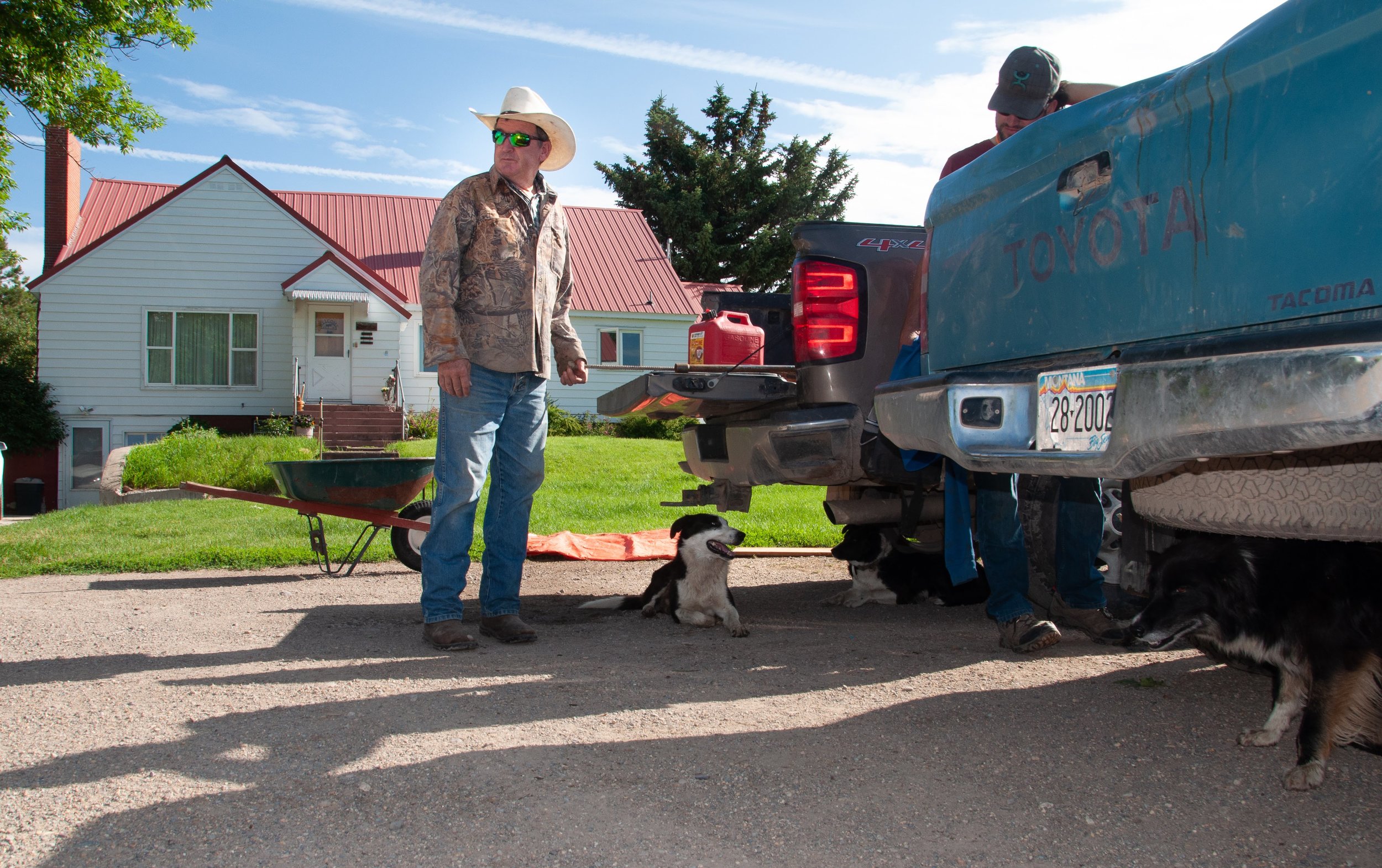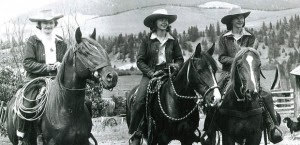Ranch History
Since the establishment of the Mannix ranch in 1882, our family has called our little ranch in the Blackfoot valley home. But we have never thought of ourselves as the true “owners” of this land. Instead, we are stewards of the soil, streams, grass, timber, and wildlife that belong to this ecosystem. The land is the lifeblood of our community, and we strive to be worthy caretakers of those resources that fall under our management.
Drawing on the agricultural tradition of the past, we strive to continually improve our stewardship methods for today. It is our conviction that managing land and livestock together in such a way that both animal and ecosystem flourish will continue to provide a healthy ecosystem supporting diverse wildlife, a good living for our family, good food for our customers, and contribute to the long term health of our community. Just as we were handed down a legacy of stewardship from the previous generation of our family, so we strive to instill the same strong conservation and stewardship values in the next generation.
Darlene with great-grand kids Finn, Holter, and Maya.
BY DARLENE MANNIX
The Beginnings
The Mannix Family Ranch was established in 1882 by Timothy Benjamin Mannix. His first acreage was purchased from Northern Pacific Railroad. At a later date, more land was homesteaded. Timothy Benjamin, hereinafter referred to as T.B., was the son of Irish immigrants who arrived on the eastern shore in 1837 and settled in Boston. They were grocers. He was born in the traditional “hub” of Boston, in 1840. When he was fifteen years of age, the family moved to Malone, N.Y., having retired from business.
With the beginning of the Civil War, he enlisted at Malone, in Company 1, Sixteenth New York Infantry. The battles in which he fought included the hard-fought engagements at Gettysburg, Antietam, Fredericksburg, and Chancellorsville. After his first tour of duty, he reenlisted in 1864, this time in the Second Massachusetts Heavy Artillery. He was in active duty till the end of the war. His first peacetime job was an appointment as the Keeper at Sing Sing Prison in Clinton, New York.
TB married Leonora Reardon in 1873. They were the parents of three sons, Will, Bert, and Fred. Tragically, Leonora passed away at the tender age of 32 years, 4 months, and 28 days, as T.B. recorded in the family bible. In an attempt to assuage his grief, in 1881 he traveled to the Territory of Montana to visit a cousin, Thomas Hickey, who resided in Butte. Mr. Hickey took him on a hunting trip to the Blackfoot Valley. He was immediately attracted to the area. After purchasing the original home site and establishing a sheep ranch, in 1882, he went back to New York, got his two older sons, Will (age 8) and Bert (age 7 ), leaving his youngest son, Fred, to finish his schooling.
At T.B’s request, in 1887, Sabina Biglin traveled from New York to Helena. She and T.B. were then married. They continued with the business of raising sheep until 1910, at which time T.B. and Sabina retired to a home in Deer Lodge. At that time T.B.’s second son, Charles Norbert (known as Bert) took over management of the ranch. In 1920, he married Louise Moreau of Helena. She was not only a lovely young lady, she was also a registered nurse and had come to a neighboring ranch on a nursing assignment. Bert and Louise were parents to a son Phillip, two daughters, Lorraine and Lucille, and a son Charles Norbert (also known as Bert Jr.). Phillip passed away in a drowning accident in 1922. Lorraine married Colonel Tom Midtlyng. Lucille married Robert Hall. Both sisters left the ranch, selling their part to brother Bert Jr.
Toward the end of Bert Sr.’s tenure, the sheep were phased out and cattle ranching was begun. Bert Sr. retired in 1948 at which time Bert Jr. took over. The Hereford breed was predominant in the cattle at this time. Bert Jr. experimented with various crosses. Angus, Shorthorn, Charolais, and even Brown Swiss had their turns. He also began some artificial insemination.
In 1956 Bert Jr. married Darlene Raymond, daughter of Irene (Peach) and Newman Raymond. Darlene is a fourth-generation Helmvillian.
Her maternal great-grandfather, Michael Geary, immigrated from Ireland and settled in the Blackfoot Valley in 1867. Her paternal great-grandfather, John Moore, came from West Virginia after having served a tour of duty in the Civil War. An injury caused early dismissal from active duty. The gold mines lured him to Montana Territory in 1866, but mining didn’t pan out (pun intended) and he began ranching in the Blackfoot Valley in 1887.
Bert Jr. and Darlene are parents of five children: Annette, David, Randy, Irene (Rene), and Brent. Annette is a teacher in Lincoln. She and husband Earl Gardner have two children, Caleb and Annah. Rene has two sons, Nathan and Ben, and splits her time between practicing massage therapy in Missoula and her home on the ranch in Helmville. You can find information about the three boys and their families on this website.
Bert was barely out of high school when he took over management, and he and his wife Darlene worked the ranch with care until Bert retired from cattle ranching to pursue an avocation of timber management in 1991. It was at this time that the Mannix Brothers became the managers. When Bert’s knees would no longer allow him to log, he still found time for horseshoe-pitching with friends and pulling the cat’s tail. Bert died in Oct 2012; he is fiercely missed.
Through the graciousness of family, the brothers have been able to piece together quite a beautiful, and historic ranch that has as its home this beautiful valley. It has been to their advantage to have the wisdom of their parents to be with them through all of their growth and tribulations. What a great history to live and help form the future.
Since 1980, sons David, Randy, and Brent, and daughter in-laws Peggy, Mo, and Stacey, have managed the land and cattle operation. Although the cattle were originally Hereford, our mother herd has been mostly Angus for many years now. In 2006, after having made some changes to the genetics of the herd, we began finishing a few beef on grass and selling them locally, and this endeavor has grown into a full-blown enterprise on the ranch which we are very proud of. It has become an avenue for us to share our story, and we thank you for being interested!






